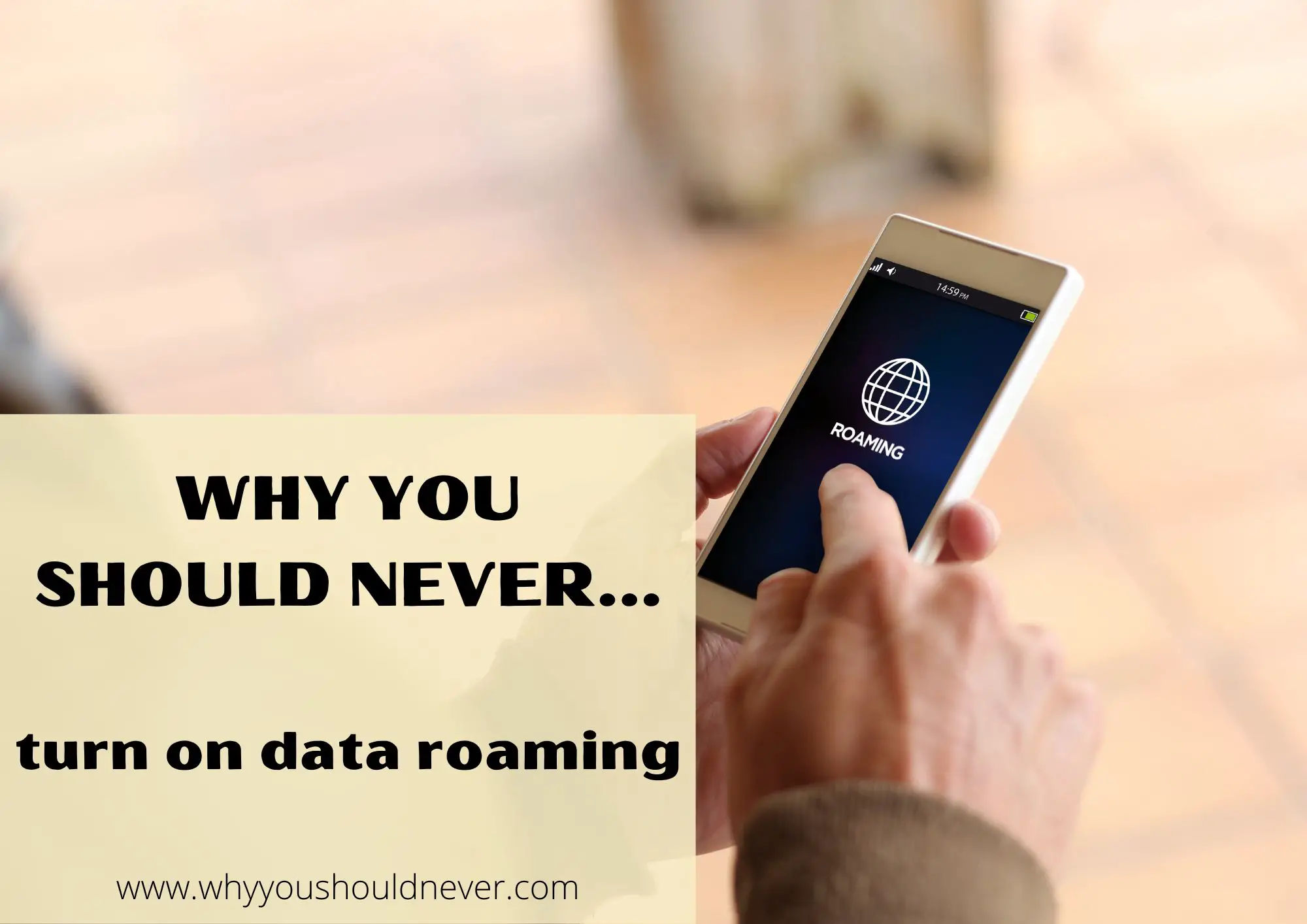![]()
Why You Should Never Turn On Data Roaming
Traveling’s great and all, but have you ever spent a memorable vacation abroad, only to return home to a phone bill that threatens to bring a tear to your eye? All that Instagramming, Tweeting, and Google Mapping on the go might have cost you a pretty penny in data usage!
Data roaming, you see, is the sneaky little culprit behind this. Sure, it’s handy in a pinch when you’re navigating an unfamiliar city or trying to translate a menu. But it comes at a price – and often a hefty one.
I’m here to tell you why turning on data roaming should be a ‘no-go’ for you. Let’s dive in, shall we?
7 reasons why you shouldn’t turn on data roaming
1. You’re dancing with high costs
Data roaming charges can hit you harder than that spicy street food in Bangkok. Unlike your usual data plan, roaming data doesn’t come cheap. It’s often charged at premium rates, especially if you’re far away from home. So each Instagram story, Tweet, or Google Map search could cost you significantly more than you’re used to.
2. Packs can pack a punch
Mobile operators might tempt you with ‘roaming packs,’ promising vast amounts of data for a seemingly small fee. But remember – ‘small’ is relative. What might seem like a bargain can quickly turn into a financial trap if you’re not careful.
These packs usually offer less data than you’re used to at home, and once you’ve exhausted your quota, any additional data usage could cost an arm and a leg.
3. WiFi is your friend
These days, WiFi is nearly as ubiquitous as coffee shops. With hotspots available in restaurants, cafes, airports, and hotels, you can often find a way to connect without needing to turn on data roaming.
It’s free, it’s generally reliable, and it won’t send you into financial despair upon your return home.
(If you’re using public WiFi, it might be worth investing in a VPN to keep yourself protected.)
4. Local SIMs are a better bet
When you land in a foreign country, it might be worthwhile to pick up a local SIM card. These are typically cheaper than data roaming and can give you a sizable amount of data for your trip. Plus, you’ll feel like a local, and who doesn’t love that?
5. Apps can work offline too
Many apps, like Google Maps and language translators, have offline capabilities. Before you head off on your adventure, download the necessary data so you can use these apps without needing an internet connection. It’s all about that prep!
6. The unexpected can happen
Imagine this: you’re deep in a rainforest, and you accidentally leave your data roaming on. Your phone is pinging away, constantly searching for a network and eating into your precious data. By the time you notice, your bill has skyrocketed. It’s always better to be safe than sorry (and broke).
7. Charged for silliness? You bet
Data roaming doesn’t just charge you for the fun stuff like social media, streaming videos, or using maps. It’ll happily deduct from your precious data for things you might consider trivial, or even unnecessary.
Ever wondered about those automatic app updates you forgot to switch off, or background data usage by apps you’re not even using? Yup, you’re paying for all of that, too. Even receiving a picture message can take a chunk out of your data allowance. Yikes!
Final word
Data roaming can be a silent budget-killer, sneakily gobbling your money for the simple act of staying connected abroad. Travel should be about experiences, not excess charges.
With WiFi access everywhere, the possibility of local SIM cards, and a plethora of offline apps, there’s no need to dance with the high costs of data roaming.
Next time you embark on an adventure, it might be wise to switch off your data roaming. Embrace the journey without the digital tether and experience travel as it’s meant to be – undiluted, immersive, and worry-free. Bon voyage!
